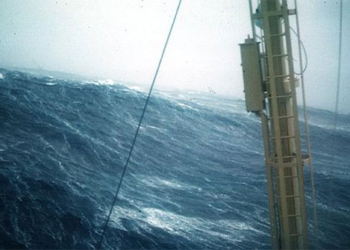The mention of death appears three times in the liability waiver, and in the event of a mishap with the Titan submersible, the rescue plan is anything but straightforward.
On June 19, the Titan submersible carrying five people, including a pilot and four tourists, went missing in the Atlantic Ocean during an expedition to explore the wreck of the Titanic. Among the passengers was British billionaire Hamish Harding.
The vessel lost contact approximately 1 hour and 45 minutes after diving.
The story of the missing Titan submersible carrying tourists to visit the Titanic wreck has captured global attention. Behind these adventurous tours lie secrets known only to those involved.
Death Mentioned Three Times
Renowned American filmmaker Mike Reiss has undertaken three expeditions with OceanGate, a company specializing in tours of the Titanic wreck, revealing: “At the depths of the Atlantic Ocean, we are completely isolated and almost always lose contact with the outside world.”
Last year, he himself dived on the Titan submersible that went missing on June 19 during the Titanic wreck tour.

The Titanic wreck observed from the Titan submersible. (Photo: Elle).
According to Mike Reiss, everyone is well aware of the dangers associated with participating in Titanic wreck tourism.
He stated: “You have to sign a liability waiver before diving, and death is mentioned three times on the first page. This is not a leisure vacation; it always carries inherent dangers.”
“Once we reach the Titanic wreck site (at a depth of about 3,800 meters), all navigation devices, positioning systems, and compasses become virtually useless.
“The tour group on the submersible fumbled blindly, even knowing that the Titanic wreck was somewhere out there,” Mike Reiss recalled, “but it was so dark that even though the wreck was only 500 meters away from our position, we spent 90 minutes searching for it.”
Is the Titan Easily Rescuable in Case of Trouble?
Unlike a submarine that can navigate ports under its own power, the Titan is a submersible approximately 6 meters long and weighing 9 tons, relying on a support vessel to transport it to a location before diving.
This vessel uses a ballast system to dive and surface, combined with four electric thrusters, allowing it to hover and maneuver along the ocean floor.
Due to the physics of water, especially at great depths like those around the Titanic wreck site, technologies we typically use on land and even in space, such as satellite communication systems or GPS, will not function.
The Titan communicates with the support vessel using sound systems that send “pings” back and forth to provide its location. Communication from the Titan to the support vessel will be severely limited if the submersible is in an improper orientation.
Specifically, communication will be interrupted if the Titan is not upright or is entangled in the Titanic wreck on the ocean floor.
If the Titan is at the bottom of the ocean, rescue operations will face significant challenges.
- Titan Submersible Crushed, 5 People on Board Killed
- Why Finding a Missing Submarine in the Ocean is Like “Finding a Needle in a Haystack”?
- Suspicious Signals Detected and What to Know About the Missing Titan Submersible
- 3 Theories About the Missing Titan Submersible Incident in the Atlantic Ocean
- The Interior Space of the Missing Submersible During the Titanic Wreck Exploration
- Submarine Carrying Tourists Exploring the Titanic Wreck Goes Missing





















































